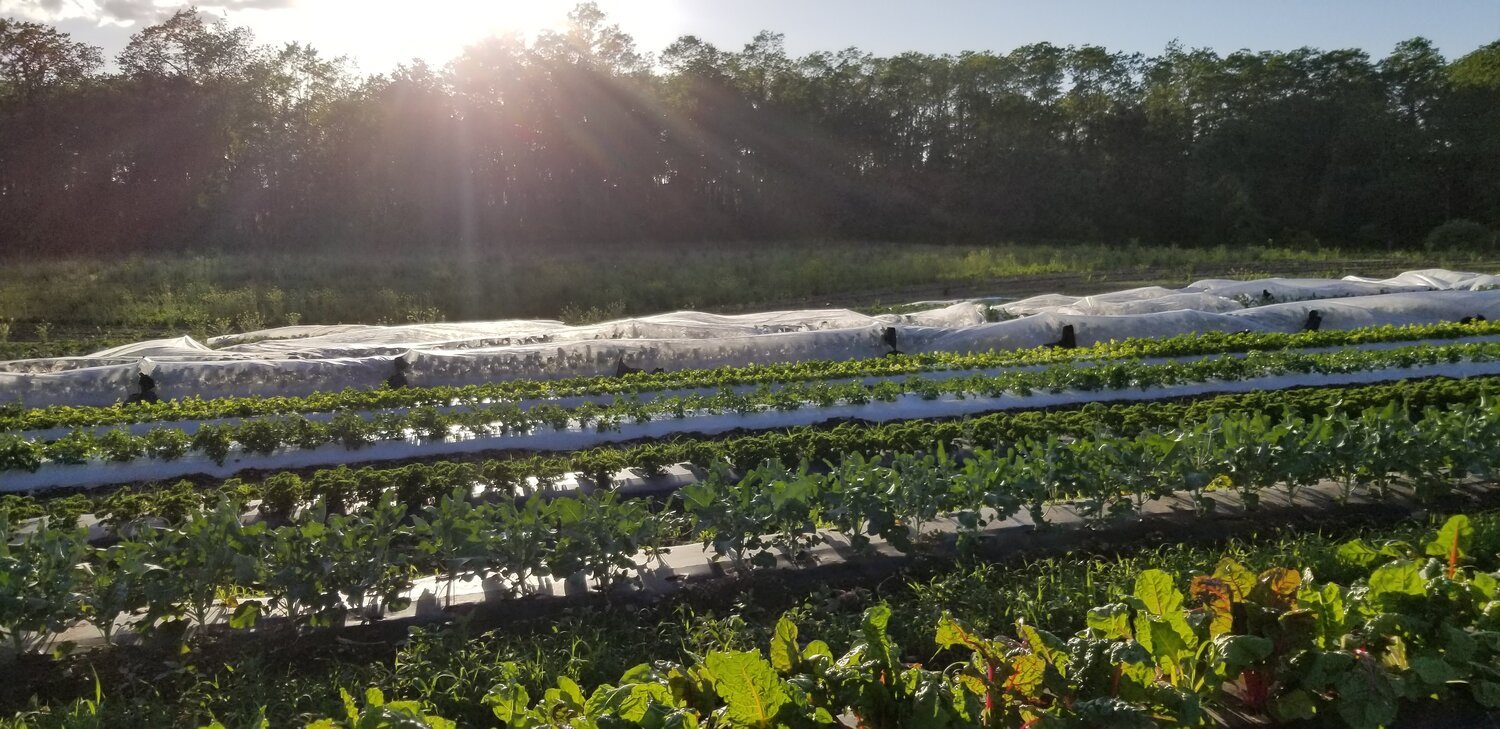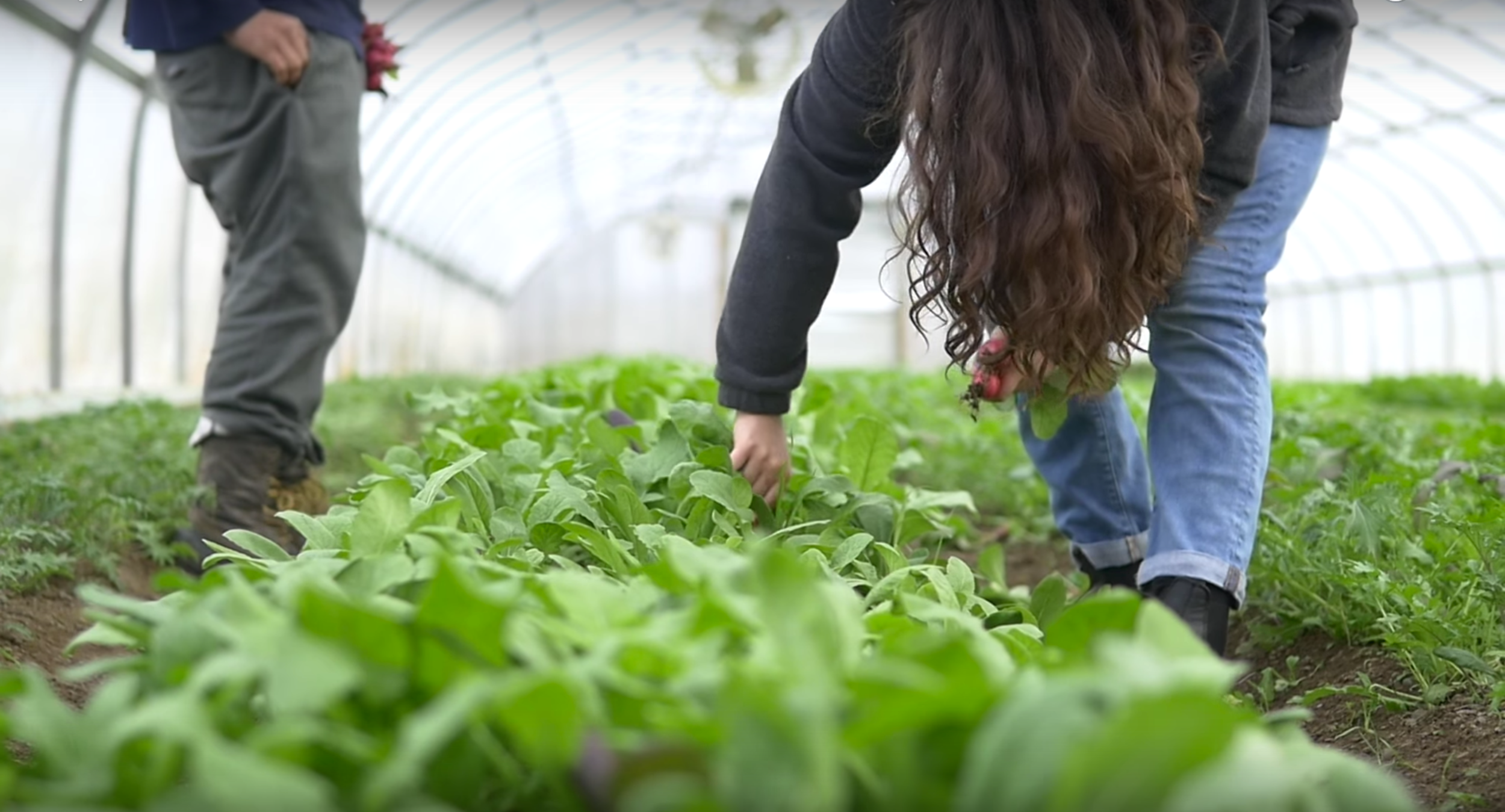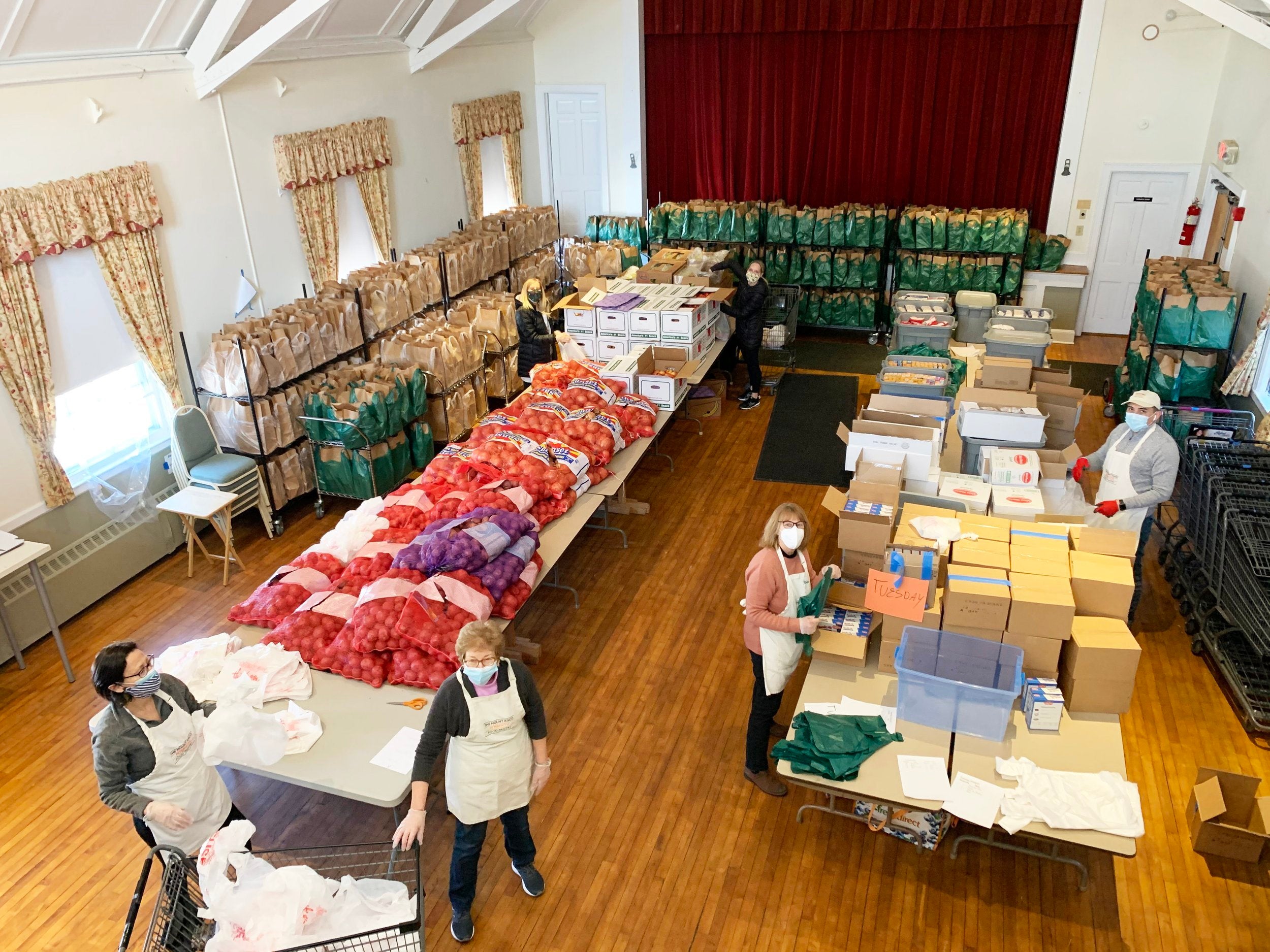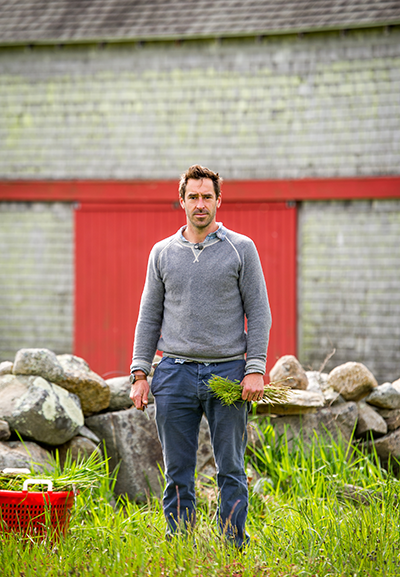Deep Roots with Scott O’Rourke
“I’m really passionate about sharing with the farmers out there who might still be learning and want to absorb as much information as possible, because I’m self-taught and I know how valuable that is. Nobody showed me how to use the tractor, no one showed me production methods or anything. My goal is to go as in-depth as I can and teach what I know.”
- Scott O'Rourke, Deep Roots Farm
This week, we sat down with Scott O'Rourke, co-founder and farmer at Deep Roots Farm in Copake, New York. Scott and his wife, Stormie, met in business school and were intent on starting a business together. With a mutual interest in farming that took root in childhood, and after coming across a happenstance opportunity to obtain an acre of land in the area, they founded Deep Roots in 2015 and implemented 100% organic methods from the start.
Since then, they have expanded to 53 acres, they grow an impressively wide variety of vegetables, herbs, fruits, and flowers, and they're sure to never miss a farmers market. Enjoy our conversation with Scott below.

Deep Roots Farm, Copake, NY. Photography courtesy of Deep Roots Farm.
Mast Journal: How did your farming journey begin? Is it something you’ve always had an interest in, or did it grow over time?
Scott: I’ve always had an interest in plant growing. Since I was 12, I’ve had a little garden. I didn’t come from a farming background at all, though. My grandfather and my dad were just really into it, and they got me into it. I then worked at this farm when I was 16, went to college after that, and we started the farm seven years ago.
Mast Journal: How did Deep Roots come to be? When did you and Stormie, your wife, decide to take the leap and start a farm together?
Scott: We met in business school, so we really wanted to start a business together. We were thinking of other things, like a pizza place or a restaurant, and in our process of looking for property and space to rent, we came across an article from the farmers that we’re on the same land with now, Tiny Hearts Farm, about how they got this free land in North Salem from Dick Button, this Olympic ice skater. So we called them and they told us to reach out to the Westchester Land Trust. Long story short, we started on a small acre for free. We just paid for labor and inputs for the farm.
Mast Journal: It’s funny – you mentioned Tiny Hearts Farm. Luke Franco, one of their co-founders and farmers, also has a music background he and I talked about and I know you do a bit of music production as well. So I’ve now spoken to two farmers who share that passion for making music. An interesting combo!
Scott: Definitely interesting. I played piano for awhile and then I got into hip hop producing and worked at a studio in Yonkers. I have all my equipment still, but between running the farm and having kids and everything, I haven’t been able to as much. We whipped it out last year for a little bit but overall, farming has been the main thing in our lives, for sure.

Stormie and Scott O’Rourke of Deep Roots Farm
Mast Journal: So Deep Roots started out as one acre. You've been steadily growing your acreage over the years, and today you have up to 53 acres. That’s a big increase – what has managing this expansion been like, and did it arise from more demand and the desire to grow your output?
Scott: A little bit of everything. We increased our production as we grew slowly because we were able to set up our accounts, new markets, and we had a very slow growth. I would say three years ago is when we really started investing into our business once we scaled up. We never put so much into it when we were on a smaller acreage, whereas when we came to this property in Copake, we bought tons of equipment through FSA loans, so it’s been great. It’s definitely a profitable venture, and we’re going to keep investing in it.
Mast Journal: I’m really interested in your reduction of food waste – what are some ways you strive to achieve that on a farm?
Scott: It’s something I take very seriously. So this week, we topped all our turnips and made a pesto out of the greens. We could freeze it, but mostly the pesto sells at our markets so that’s been great to repurpose and get creative with what would otherwise be a bunch of food waste. I made a batch of 40 or 50 containers of pesto, and we have none left, just from two farmers markets. Pretty amazing. All of our leftover produce, we top them and turn them into pickles, or pesto, and we use all organic ingredients with them. People seem to be really enjoying them and it’s been profitable, so it’s a win-win. The way I look at it now is that diversity of produce wins. To be able to have every single product we grow available at the market, it’s almost like we’re a supermarket but with the highest quality produce.
Mast Journal: That’s something I noticed about Deep Roots – the diversity of your produce, and how you grow such a wide variety of vegetables and herbs. Is that unusual, for a farm your size?
Scott: We’re definitely a bit more wide-ranging than most. We know a lot of farms, especially around us, who do the same thing we do but they’re more like ten, fifteen acres. Our acreage spreads out so much because of the size of our storage crops. We did eight acres of winter squash, and we have a big variety between all the squashes like honey nut and pumpkins. So those will last us all through the winter through our markets and our CSA program.
Mast Journal: I noticed how the farm’s social media is very informative – in a lot of posts, you describe in great detail how you’ve planted or harvested a certain crop, or you even take the time to discuss which kind of planting bed you’ve used and why. Is it important for you for people to know how exactly their produce is made, and what goes on behind the scenes?
Scott: Definitely that, but a lot of it is also for people interested in farming and those who are curious about how things are actually grown. I’m really passionate about sharing with the farmers out there who might still be learning and want to absorb as much information as possible, because I’m self-taught and I know how valuable that is. Nobody showed me how to use the tractor, no one showed me production methods or anything. My goal is to go as in-depth as I can and teach what I know. We’ve also been to schools down in Manhattan and have talked to the kids about farming. We’ve learned a lot over the years through trial and error, so as much as I can help somebody else avoid some of the mistakes I made, I will.

Harvesting radishes in the greenhouse.
Mast Journal: I’m curious if there are ways you’ve had to adjust your methods due to climate change. What have you noticed over the years in terms of extreme weather events or crop changes?
Scott: The biggest thing I’ve come to notice over the years is just how unpredictable the weather is. This year we were in a drought, last year we were in a complete flood. You just have to roll with the punches, which applies to all things crop-related. We’re trying to adapt to climate change using greenhouses. We started our own greenhouse company for the winter to keep income coming through. We’ve been building them like crazy – they’re the only way to combat the water situation.
Mast Journal: Do you have a favorite crop you like to work with?
Scott: I’m definitely a tomato grower, for sure. But my favorite would have to be watermelon. It grows so well – no inputs, it comes out so sweet here, all you have to do is water it for two weeks, and everybody loves it. We could bring a thousand pounds to one market and come back with nothing.
Mast Journal: Do you have a least favorite crop?
Scott: Yes – cucumbers. There’s a huge demand for them, but every year they die so quickly. Also, when you pick okra and squash, they just make your arms break out all over. At least the squash lasts us awhile though. The cucumbers are really great for a week and then all of a sudden the plant is totally dead. Right now, we’re working on putting them in the greenhouses to help with that.
Mast Journal: What’s your favorite part about what you do?
Scott: At the end of the week, bringing the things we grew down to the market and seeing how happy and nice people are about what we’ve grown. It makes it easier, after we’ve been working hard in the fields with all of our crew, to see our customer base face-to-face and feel that community support. And it’s consistent – we don’t miss a market ever.
Mast Journal: What’s the hardest part about what you do?
Scott: The jack-of-all-trades aspect. Needing to be a mechanic, an accountant, and a farmer all at once. The combination of all the things together that you need to know – if equipment breaks, it’s up to you to figure it out. I hope, in the future, to have a mechanic on staff like some of those bigger farms like Hawthorne Valley. It would be great to get to focus on just one or two things. All in all, it’s about 100 hours a week of labor. But like I said, it’s worth it when you get to see what you’ve grown and how people are appreciating what you’ve done.
More from The Journal

Mt. Kisco Interfaith Food Pantry
In conversation with Sharon Seidell, president of our local food pantry in Mt. Kisco, NY.
Read more
Eating Our Vegetables with Chris Fischer
In conversation with chef, farmer, and cookbook author, Chris Fischer.
Read more